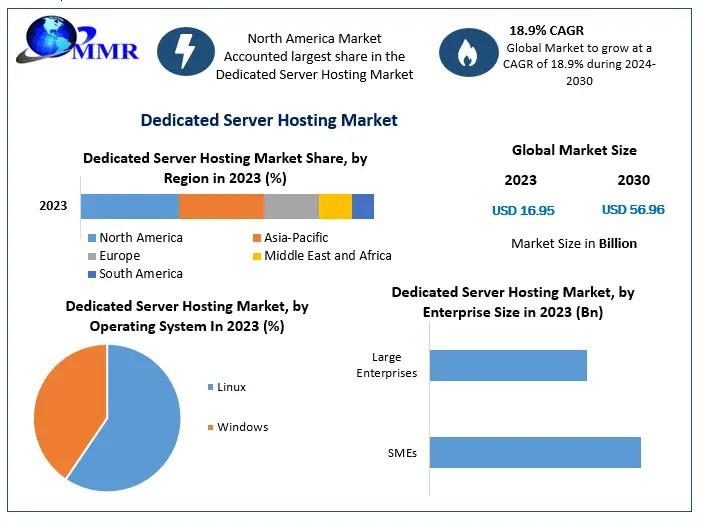10 Tools To Prevent Cloud Vendor Lock-in
10 Tools To Prevent Cloud Vendor Lock-in(click image for larger view and for slideshow)
Rackspace’s stock price took a hit when Amazon Web Services announced it was cutting prices on dedicated servers by up to 80%. Now Rackspace is hitting back.
Upon closer inspection, Amazon’s 80% reduction only applied to an extra $10 fee, a surcharge charged once an hour for each region in which the customer was running dedicated servers. Regular per-hour fees were applied after that charge. They too were cut July 10, but cut significantly less.
Nevertheless, investors know that the Rackspace Hybrid Cloud or public cloud is the smaller part of its business. The main part is still managed hosting provided on dedicated servers. Because of that, they appear to have assumed Rackspace would be a firm affected by the big Amazon price cut. And Rackspace’s already battered stock dropped $3.41 — or 8% — to $38.37 on the announcement. Within the past 12 months, Rackspace stock had previously stood at $81.36.
Under AWS’s old pricing scheme, the $10 upfront fee amounted to $7,200 a month for a continuously used, dedicated server or set of dedicated servers, plus the regular hourly charges. This surcharge was reduced 80% to $2 an hour ($1,440 a month for any number of dedicated servers). In addition to that fee, customers paid $604.80 in hourly charges for a continuously used, m1 extra-large server; after the price cuts, the hourly fee dropped to $380.16 a month.
[ Want to learn more about how Amazon revised its “dedicated” server pricing approach? See Amazon Cuts Cloud Prices Again. ]
Rackspace, in contrast, is offering a dedicated server with technical support for $499 a month. Perhaps it’s not surprising that Amazon’s latest “price reduction” drew caustic comments from Rackspace CTO John Engates.
“The way AWS defines dedicated computing … is at odds with the view of the rest of the industry, including Rackspace,” Engates wrote on the Rackspace website Tuesday morning.
To Engates, a dedicated server is a piece of bare metal hardware reserved for use by a single customer outside the public cloud. It has its own networking and storage, as opposed to using the shared resource pools of the public cloud. An EC2 dedicated instance from Amazon is also a piece of hardware dedicated to a single customer, “but still connected to Amazon’s public cloud. You’re just a dedicated, single-tenant slice of that cloud. If the AWS public cloud suffers an outage, you will be affected,” wrote Engates. If you need storage beyond what your server has been granted, that means getting it from Amazon’s cloud service, Elastic Block Store, sometimes described as the service most difficult from which to get consistent performance.
Engates drew another contrast between Rackspace and Amazon on what can be done with a Rackspace dedicated server. It can be highly customized and given a particular CPU, individual operating system and the customer’s preferred type of storage. At AWS, “the specs of an Amazon dedicated instance are predetermined for you, with no option of customization.”
A Rackspace dedicated server is bare metal and avoids any software latencies due to a virtual machine’s hypervisor or contention for I/O. If you run an Amazon dedicated instance, chances are you will “over-provision and over-engineer to design for the higher likelihood of failure,” he wrote.
Amazon spokesmen had not responded to a query on these assertions at press time.
Engates dissent was echoed by two Wall Street analysts knowledgeable about the AWS price reduction. On July 10, Barron‘s Tech Trader Daily columnist Tiernan Ray posted favorable predictions on Rackspace from Cowen & Co. and Wells Fargo analysts under the headline, “RAX (Rackspace) Drops 8%: Fears of Amazon Pricing Impact Overblown, Say Bulls.”
“Even with an AWS dedicated instance, our contacts suggest customers still cannot fully optimize the environment to the workload as one can with a dedicated server in either a managed hosting or colocation environment,” such as Rackspace’s, wrote Gray Powell of Wells Fargo.
Cowen and Co.’s Colby Synesael has rated Rackspace as a stock that will outperform the market and reach $46. “The actual threat (from Amazon) is not that big,” he wrote.
Of course, Rackspace, with its managed hosting business, can offer dedicated servers outside its public cloud more easily than Amazon Web Services. AWS has no managed hosting business and has had to fashion virtual private data centers and dedicated instances within its public cloud infrastructure. If nothing else, the debate illustrates how the strengths of various suppliers reflect how they came to be cloud service providers.
But Engates wasn’t done drawing a line under how Rackspace differs from AWS. Amazon’s latest price reduction “provides a clear validation that dedicated, single-tenant computing will continue to serve as a critical component of IT infrastructure. Some workloads run far better there than in multi-tenant environments,” he said.
In other words, Amazon’s adjustment in dedicated instance pricing, instead of just another cut, reflected a side of its business that was overdue to be revised. Amazon is following the lead of managed hosting providers, a pre-cloud business, in taking dedicated servers seriously. If anything, the previous surcharge offered a barrier to customers adopting that form of computing. To someone considering bare metal servers, the $7,200 monthly fee forced reconsideration in the direction of multi-tenant services.
If anything, Engates is capitalizing on what appears to be a realization within corporate IT that there are advantages to both models, and in some cases the dedicated servers should be just that, dedicated to the customer, attached to their own resources and outside the public cloud.
https://www.informationweek.com/it-infrastructure/rackspace-we-have-dedicated-servers-amazon-doesn-t






